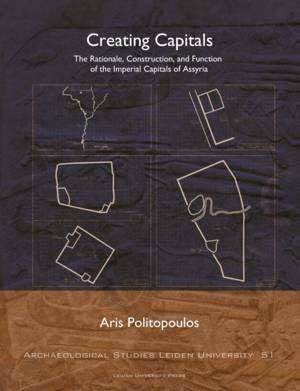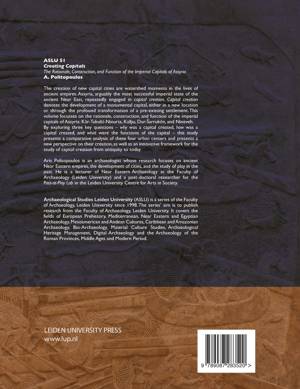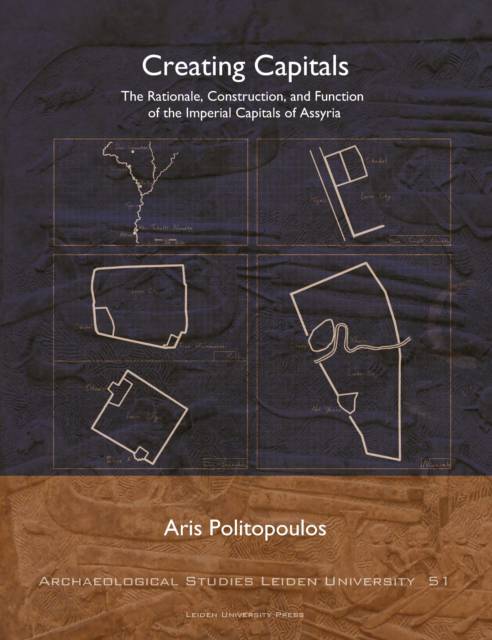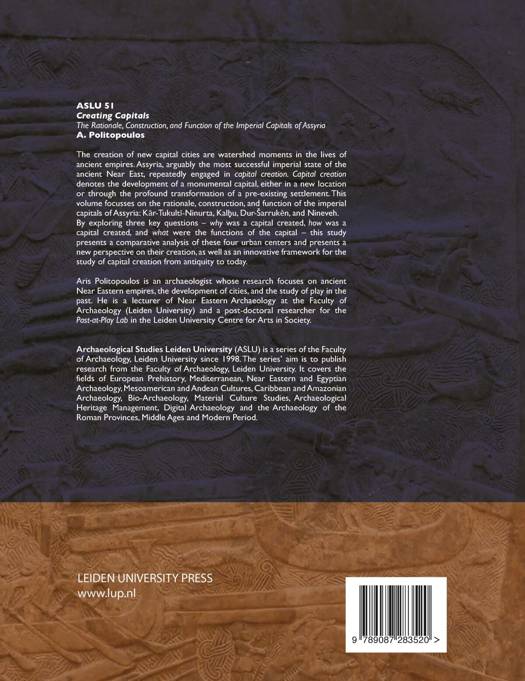
- Afhalen na 1 uur in een winkel met voorraad
- Gratis thuislevering in België vanaf € 30
- Ruim aanbod met 7 miljoen producten
- Afhalen na 1 uur in een winkel met voorraad
- Gratis thuislevering in België vanaf € 30
- Ruim aanbod met 7 miljoen producten
Zoeken


Creating Capitals
The Rationale, Construction, and Function of the Imperial Capitals of Assyria
Aris Politopoulos
€ 55,00
+ 110 punten
Omschrijving
"The creation of new capital cities are watershed moments in the lives of ancient empires. Assyria, arguably the most successful imperial state of the ancient Near East, repeatedly engaged in capital creation. Capital creation denotes the development of a monumental capital, either in a new location or through the profound transformation of a pre-existing settlement. This volume focusses on the rationale, construction, and function of the imperial capitals of Assyria: K.r-Tukult.-Ninurta, Kal.u, Dur-.arruk.n, and Nineveh. By exploring three key questions - why was a capital created, how was a capital created, and what were the functions of the capital - this study presents a comparative analysis of these four urban centers and presents a new perspective on their creation, as well as an innovative framework for the study of capital creation from antiquity to today. "
Specificaties
Betrokkenen
- Auteur(s):
- Uitgeverij:
Inhoud
- Aantal bladzijden:
- 182
- Taal:
- Engels
- Reeks:
- Geïllustreerd:
- Ja
Eigenschappen
- Productcode (EAN):
- 9789087283520
- Verschijningsdatum:
- 11/03/2020
- Uitvoering:
- Paperback
- Formaat:
- Trade paperback (VS)
- Afmetingen:
- 208 mm x 269 mm
- Gewicht:
- 566 g

Alleen bij Standaard Boekhandel
+ 110 punten op je klantenkaart van Standaard Boekhandel
Beoordelingen
We publiceren alleen reviews die voldoen aan de voorwaarden voor reviews. Bekijk onze voorwaarden voor reviews.












